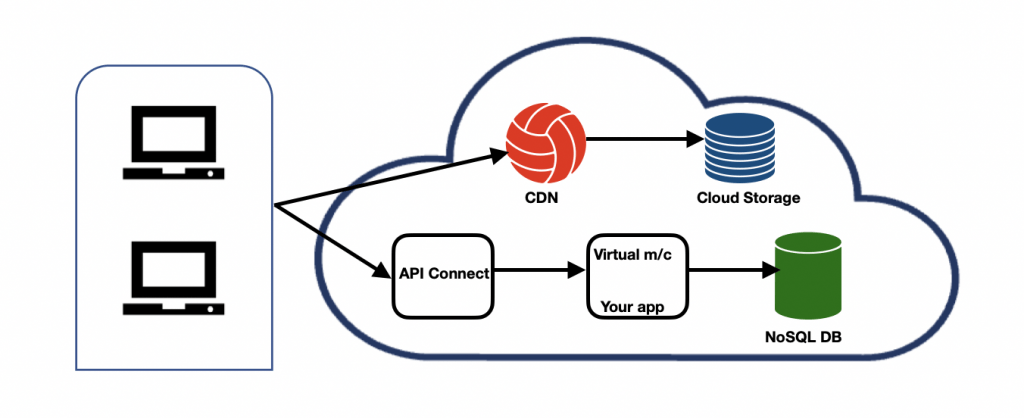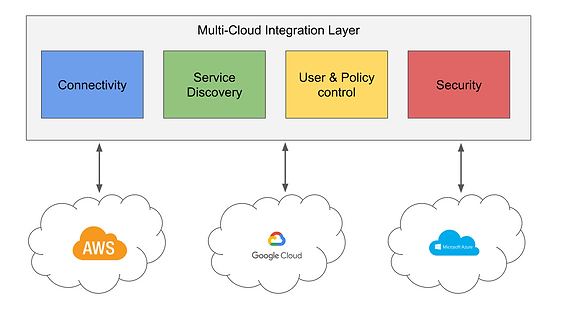
- Introduction to Cloud Computing Project Ideas
- Simple Cloud Storage App
- Cloud-based Backup Solution
- Real-time Chat Application on the Cloud
- Serverless Web Application
- Cloud-based Analytics Dashboard
- Multi-cloud Monitoring System
- Conclusion
Introduction to Cloud Computing Project Ideas
Cloud computing has revolutionized the way businesses and individuals store, manage, and process data. It offers scalable, flexible, and cost-effective solutions for various industries. This list of cloud computing project ideas is designed to help students, developers, and professionals explore real-world applications of cloud technology, a great resource for those enrolled in a Cloud Computing Course. From building cloud-based storage systems to deploying machine learning models on the cloud, these projects will enhance your technical skills and understanding of cloud platforms like AWS, Azure, and Google Cloud. Whether you are a beginner or an advanced learner, these ideas will provide hands-on experience in cloud security, automation, and performance optimization.
To Earn Your Cloud Computing Certification, Gain Insights From Leading Cloud Computing Experts And Advance Your Career With ACTE’s Cloud Computing Online Course Today!
Simple Cloud Storage App
A Simple Cloud Storage App provides an easy-to-use solution for individuals and businesses to store, access, and manage data on the cloud. Cloud storage refers to the practice of saving data in an online storage space rather than locally on physical devices such as hard drives. This technology provides numerous advantages, including flexibility, scalability, and remote access. The fundamental feature of a simple cloud storage app is to store user data on remote servers, hosted by third-party service providers. These services allow users to upload and organize their files, including documents, images, videos, and other types of media, which can be efficiently managed through strategies like Simplify Azure Management Using Resource Groups. By using the internet, users can retrieve their data from anywhere, anytime, as long as they have an internet connection. This characteristic is one of the most compelling advantages of cloud storage, as it eliminates the need for physical storage media and simplifies data sharing.

These cloud storage apps often provide features such as automatic file synchronization across multiple devices, versioning, and sharing options. One of the key benefits is the ability to store large amounts of data without worrying about running out of physical storage space. Most cloud storage services offer tiered pricing, where users can choose a plan based on the amount of storage they need. Additionally, cloud storage services tend to be reliable, with high uptime and advanced data recovery options. For example, Google Drive offers 15GB of free storage and is widely used due to its ease of integration with other Google services. Dropbox, another widely popular option, offers cloud storage with file-sharing features and automatic backups. Microsoft OneDrive is integrated with Windows operating systems, offering seamless cloud storage solutions for users.
Cloud-based Backup Solution
- A Cloud-based Backup Solution is a strategy that involves storing copies of data remotely, off-site, and on cloud infrastructure, ensuring data safety and recovery in the event of a disaster. Cloud backup solutions are particularly valuable for organizations that need to protect large amounts of data, reduce risks of data loss, and meet disaster recovery requirements. Unlike traditional physical backup methods, cloud backups provide a more scalable, cost-effective, and automated way to manage data security.
- The key benefits of a cloud-based backup solution are its scalability, automation, and reliability. Cloud services, such as Amazon Web Services (AWS), Microsoft Azure, and Google Cloud, offer flexible storage options, allowing businesses to scale their backup needs as their data grows. Rather than investing in on-site backup infrastructure, businesses can leverage the cloud provider’s extensive infrastructure for backup purposes.
- Automated cloud backup solutions are another key benefit. Most services allow businesses to schedule regular backups, ensuring that the latest versions of critical files are always stored safely in the cloud, which can be securely managed using Azure Active Directory.
- This is particularly important for organizations that deal with large volumes of data or those that operate in environments where data is constantly changing. Automated backups eliminate the need for manual intervention, reducing the chances of human error and ensuring that backup processes are performed consistently.
- Cloud backup solutions also offer cost savings. Since businesses no longer need to maintain physical storage systems and infrastructure, they can reduce hardware and operational costs. The pay-as-you-go model provided by most cloud backup services means that businesses can pay only for the storage they use, further reducing upfront capital expenses.
- In terms of reliability, cloud-based backups are often more secure than traditional methods. Data is typically encrypted both in transit and at rest, reducing the risk of unauthorized access. Additionally, most cloud providers offer geographically distributed data centers, ensuring that backup data is stored across multiple locations for redundancy. This means that in the event of a regional failure, the backup data remains accessible from other locations.
- However, there are some potential challenges with cloud backup solutions. Security remains a top concern, as users must trust their cloud service provider with sensitive information. In some cases, data may be subject to local regulations or jurisdictional laws, which can complicate compliance. Businesses must also ensure that they have a solid disaster recovery plan in place, including methods for retrieving and restoring data in a timely manner.
- Overall, cloud-based backup solutions are a critical tool for modern businesses, providing an efficient, cost-effective, and secure method of safeguarding data and ensuring business continuity.
- A Serverless Web Application is an application that runs on a serverless architecture, where the cloud provider automatically manages the infrastructure needed to run the app. In a serverless setup, developers don’t have to worry about provisioning or managing servers. Instead, they write the application code and deploy it on a platform that automatically scales the infrastructure to handle the required compute resources.
- Serverless architectures are primarily powered by Function-as-a-Service (FaaS) platforms, such as AWS Lambda, Azure Functions, and Google Cloud Functions. These platforms allow developers to upload code and execute it in response to specific events or triggers without worrying about the underlying server management.
- One of the main advantages of serverless web applications is cost efficiency. Since users pay only for the compute time used (i.e., when the code is actually executing), this model eliminates the need for maintaining idle resources, a key topic discussed in a Cloud Computing Course.
- This is particularly beneficial for applications with unpredictable or fluctuating traffic. For example, an e-commerce site may have traffic surges during certain seasons or sales, but with serverless architecture, resources automatically scale to accommodate the increased demand.
- Another advantage is ease of deployment. With serverless applications, developers don’t need to manage servers, networking, or scaling issues, which simplifies the deployment process. Serverless frameworks provide developers with tools to deploy, test, and manage applications quickly and efficiently.
- Serverless applications are also highly scalable, as the cloud provider automatically adjusts resources based on demand. This flexibility ensures that applications perform well even as user traffic grows. However, serverless architecture has some drawbacks.
- Cold starts, where functions take time to initialize before execution, can introduce latency, particularly in performance-critical applications. Additionally, developers have less control over the infrastructure and can encounter vendor lock-in, making it difficult to migrate applications to other platforms.
- A Multi-cloud Monitoring System provides businesses with a centralized platform for monitoring applications, services, and resources across multiple cloud environments. As organizations increasingly adopt multi-cloud strategies, it becomes essential to have a unified view of their cloud infrastructure to ensure optimal performance and uptime. A multi-cloud monitoring system allows businesses to track metrics like CPU usage, latency, uptime, and resource utilization across cloud platforms like AWS, Google Cloud, and Microsoft Azure.
- With a multi-cloud monitoring system, organizations can gain valuable insights into how their services are performing across different cloud environments, enabling them to detect issues early and optimize resources, which ties into the concepts covered in the Basic Guide to Computer Networks. Popular tools such as Datadog, New Relic, and Prometheus provide robust monitoring solutions that aggregate data from various cloud providers and offer real-time visibility into the health of cloud applications.
- One of the key benefits of multi-cloud monitoring is the ability to manage complex infrastructure more effectively. It allows businesses to detect and respond to issues before they escalate, minimizing downtime and performance degradation. Additionally, multi-cloud monitoring tools provide detailed reports and analytics, helping businesses optimize their cloud costs and resource allocation.
- While multi-cloud monitoring systems offer significant advantages, they also come with challenges such as data integration complexities and ensuring visibility across diverse cloud platforms. Organizations must carefully plan their monitoring strategy and choose tools that support multi-cloud environments to ensure accurate and reliable monitoring.
To Explore Cloud Computing in Depth, Check Out Our Comprehensive Cloud Computing Online Course To Gain Insights From Our Experts!
Real-time Chat Application on the Cloud
A Real-time Chat Application on the Cloud is a messaging platform that enables users to communicate instantly over the internet. The key characteristic of a real-time chat application is its ability to send and receive messages instantly, creating seamless conversations among users. Unlike traditional messaging systems that may delay the sending and receiving of messages, a real-time chat application ensures immediate data exchange, making it ideal for personal communication, business collaborations, and customer service. Cloud-based chat applications leverage cloud infrastructure to handle user connections, manage data flow, and store conversations, which can be enhanced by principles from Understanding DevOps vs DevSecOps for better security and operational efficiency. By hosting the chat service on the cloud, the application can scale on-demand to accommodate a growing number of users, ensuring that performance remains high and stable even during traffic spikes. Cloud providers, such as AWS, Google Cloud, and Microsoft Azure, offer various services, including messaging queues, databases, and computing resources, that can be used to build real-time chat applications. One of the key benefits of real-time chat applications is accessibility. Users can access the service from any device with an internet connection, and messages are synchronized in real-time across all devices. This makes it easy for teams to collaborate, share files, and keep track of conversations across different devices. These chat applications can also integrate with other productivity tools, such as file storage systems, customer relationship management (CRM) platforms, and project management software, making them more versatile.
Serverless Web Application
Are You Considering Pursuing a Master’s Degree in Cloud Computing? Enroll in the Cloud Computing Masters Course Today!
Cloud-based Analytics Dashboard
A Cloud-based Analytics Dashboard is a web application that presents data in a visual format to help organizations make data-driven decisions. These dashboards allow users to monitor key performance indicators (KPIs), analyze trends, and visualize large datasets in real-time. Cloud-based analytics dashboards use cloud computing resources to store, process, and retrieve data from multiple sources, enabling users to make informed decisions based on up-to-date information. Cloud platforms such as Google BigQuery, AWS Redshift, and Microsoft Power BI offer analytics services that power these dashboards, allowing organizations to process vast amounts of data quickly and securely. These dashboards often provide features like data filtering, drill-downs, and custom reporting, giving users deep insights into business performance, which aligns with the principles of Exploring the Cloud-First Strategy. One of the advantages of a cloud-based analytics dashboard is its accessibility. Since it is hosted on the cloud, users can access it from any device with an internet connection, allowing decision-makers to track metrics from anywhere, at any time. This is particularly beneficial for businesses with remote teams or global operations. Another benefit is real-time data processing. Many cloud analytics solutions are designed to process and visualize data in real time, allowing businesses to respond quickly to emerging trends or issues. For example, an e-commerce business could use a cloud analytics dashboard to track sales performance and make adjustments to marketing campaigns or inventory management.
Multi-cloud Monitoring System

Preparing for Cloud Computing Job Interviews? Have a Look at Our Blog on Cloud Computing Interview Questions & Answer To Ace Your Interview!
Conclusion
Cloud computing has revolutionized the way businesses and individuals approach data storage, collaboration, and application deployment. The simple cloud storage app, cloud-based backup solutions, real-time chat applications, serverless web apps, cloud-based analytics dashboards, and multi-cloud monitoring systems all leverage the power of cloud infrastructure to provide scalability, flexibility, and reliability, key concepts covered in a Cloud Computing Course. As technology continues to evolve, these cloud-based solutions will become even more critical for businesses seeking efficiency, agility, and cost savings.





